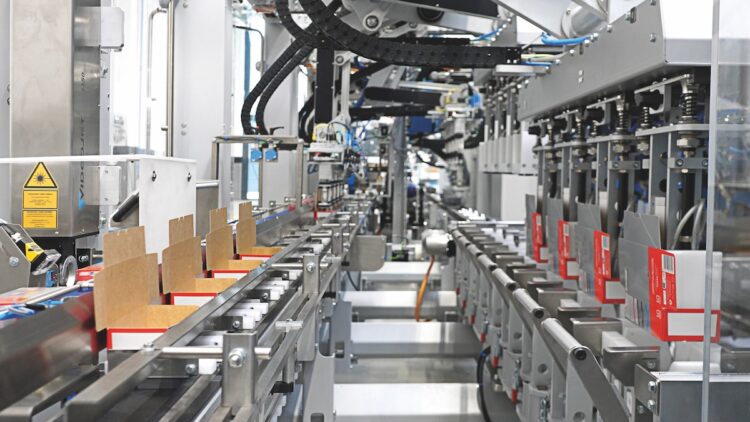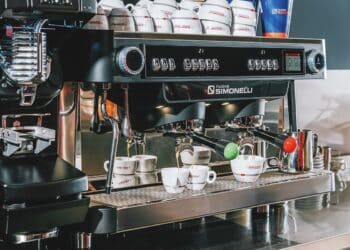When one of the world’s leading coffee companies came to Cama Group with a “game-changing” new capsule product, the Italian machine manufacturer engineered a bespoke secondary-packaging solution.
While it’s hard to pinpoint an exact number, it’s estimated capsules and pods account for around 15 to 25 per cent of total global coffee revenue. That’s tens of millions of consumers choosing the single-serve format as their preferred brew method.
With such a large share of the international market, it’s no surprise the capsule sector is a major research and development focus for many of the world’s leading coffee companies. Much of the current innovation concentrates on the use of sustainable materials, high-end specialty coffee products, and smarter brewing tech for at-home experiences.
As such, new capsule products are being developed constantly. However, it’s not just the pod and what’s inside it that the producer must consider: how the product is made and then packaged is a major contributor to its success.
In 2024, one of Europe’s largest coffee roasters approached Italian secondary-packaging machine manufacturer Cama Group with a challenge. With an innovative new capsule product in development, the client required a custom-made secondary-packaging line and carton that ticked the boxes for sustainability, efficiency, and design.
“The new product is a game-changer in the coffee capsule/pod arena,” says Alessandro Rocca, Cama Group Sales Director.
“It’s pretty unique compared to other products currently in the market.
“Because it’s so different in shape, it required a completely new way of handling the capsules. We couldn’t rely on the conventional methods used in most packaging lines or carton setups, therefore we had to engineer a completely bespoke solution.”
One of the challenges the Cama engineers faced was how the capsules would sit in the carton. As a premium product, they couldn’t touch each other once placed inside the packaging to avoid damage to the pods.
“Working alongside the packaging design team at the coffee company, it took us around six months to develop a carton that provided the best solution in terms of presentation and material quality,” Rocca says.
“Once we had the carton, we then had to build the packaging line around the new design. While we incorporated some of the advanced robotic modules previously developed by our team, the line was completely customised for the client.”
As with all of Cama’s machines, from the very first planning stages this solution was engineered with sustainability in mind. Electrical components were designed to be as energy efficient as possible to save the customer operational costs and reduce their carbon footprint.
“For this project, sustainability was a priority for the client. Through the packaging design we aimed to reduce the amount of material used for each carton and opted for recycled cardboard,” says Rocca.
While this project focused on a single flavour of coffee capsule, Cama also specialises in providing solutions for those wanting to offer variety packs. The manufacturer has produced multipack packaging lines for other industries for a long time, but in the past few years has seen a sharp increase in coffee companies interested in the technology.
“Traditionally, coffee companies haven’t offered a huge range of flavours, but we’ve started to see a lot more companies in the United States follow this trend,” Rocca says.
“More and more businesses are reaching out to us for this technology. Variety packs require a different packaging solution because they involve a robotic station to mix several flavours into a configuration that can be loaded into the carton in multiple layers. We know flexibility is important to these customers, so we can help them design the composition of the capsules and the insert layers.”
Sustainable capsules that are either recyclable or compostable are another avenue in which Rocca sees potential.
“There are a lot of companies interested in producing eco capsules, but there is still some work to be done on the technology. Unfortunately, paper pods are not ready to be packed into cartons without a plastic barrier because the shelf-life would be too short,” he says.
“However, in the next few years I’m sure we’ll see innovation in this space and paper pods becoming more mainstream. We are eager to invest in these projects because we know how important sustainability is to the coffee sector.”
For more information, visit camagroup.com
This article was first published in the September/October 2025 edition of Global Coffee Report. Read more HERE.





